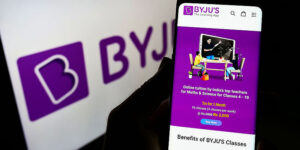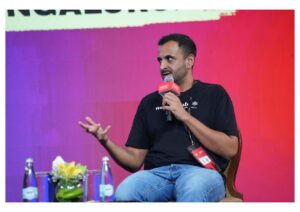
Corporate wellness has evolved significantly over the years, moving from generic, one-size-fits-all programmes to more personalised, data-driven approaches.
Today, the focus is on health intelligence, bolstered by cutting-edge metrics that provide insights into metabolic indicators, nutritional status, gut health, and brain health. This new paradigm offers a more comprehensive, individualised strategy to improve employee well-being, productivity, and longevity.
The wellness programmes of yesterday are undergoing a radical transformation to meet the demands and complexities of modern work-life.
• From generic to specific: Moving away from a one-size-fits-all approach to highly tailored wellness plans.
• Digital and analytics-driven: The incorporation of seamless digital experience for a health optimisation journey built on deepbiomarker data analytics and health indicators to keep track of metrics and engagement
• Mental wellbeing: An increased focus on physical health and mental well-being, including stress management and mindfulness training.
• Longevity focus: More attention is being given to longevity and enhancing the healthspan of employees.
• Holistic view: Programmes are now looking at holistic health, considering factors like sleep, nutrition, and mental health, rather than focusing solely on exercise.
Traditional health metrics like weight, blood pressure, fasting sugar levels, lipids, and hormones often provide a narrow view of employee wellness in isolation. ‘
Other problems with a traditional approach include:
• Incomplete picture: These traditional metrics might not give insights into underlying conditions or root causes.
• Lack of personalisation: Generic data does not support highly customised health recommendations.
• Limited preventive scope: Traditional metrics may not be as effective for preventive health measures, lacking information on nutrition, sleep, and mental well-being.
• Need for holistic assessment: New-age metrics look at metabolic indicators, nutritional levels, gut health, and brain health to offer a comprehensive understanding of health.
• Data synergy: The advantage of integrating traditional metrics with new-age metrics for a more complete, actionable health profile
Personalising wellness goals via a data-driven approach
The past shortcomings of wellness initiatives largely stemmed from their lack of personalisation. However, Health Intelligence is introducing a new era where personalisation takes center stage. The use of new-age metrics ensures that each wellness plan is uniquely aligned with an employee’s health profile.
Key health goals now centre around:
• Metabolic health optimisation: Customised nutrition and exercise plans to regulate blood sugar, improve insulin resistance, and maintain a balanced lipid profile.
• Nutrient deficiency corrections: Periodic assessments to detect micronutrient deficiencies, followed by tailored dietary or supplement recommendations.
• Sleep quality enhancement: Tracking sleep patterns to provide insights for improving sleep quality, which directly affects productivity and well-being.
• Focus and energy improvement: Mindfulness techniques and cognitive exercises aimed at enhancing mental clarity and focus during work hours.
• Body recomposition: Targeted physical activity and nutritional guidance to achieve desired body composition, be it fat loss, muscle gain, or maintenance.
Enhancing employee engagement
The lack of engagement in traditional wellness programmes often resulted from their inability to provide immediate, personalised feedback. The integration of real-time monitoring tackles this head-on. Key benefits include:
• Timely interventions: Real-time data allows for quick, data-backed decisions, ensuring that potential health issues are addressed before they escalate.
• Chronic condition management: Employees with chronic conditions can be monitored in real-time, making medication adherence and lifestyle adjustments more manageable.
• Behavioural nudges: Real-time feedback serves as a continuous nudge for making healthier choices, be it taking a break, drinking water, or avoiding prolonged periods of inactivity.
• Interactive goals: Real-time data allows the setting of interactive, short-term goals that provide a sense of achievement, further increasing engagement and motivation.
The shift toward Health Intelligence does not just bring about improved well-being; it also offers quantifiable benefits for the organisation. As more companies begin to understand the ROI of these programs, the value of incorporating new-age metrics in corporate wellness is becoming increasingly evident.
Corporate wellness is on the cusp of a transformation, driven by new-age metrics that offer deeper health insights. This data-driven, personalised approach not only enhances employee well-being but also contributes to the company’s long-term success. The key to future corporate wellness lies in embracing these new-age metrics for healthspan and longevity.
Vikas Gupta is the Co-Founder of the health tech platform Human Fractal.
(Disclaimer: The views and opinions expressed in this article are those of the author and do not necessarily reflect the views of YourStory.)










